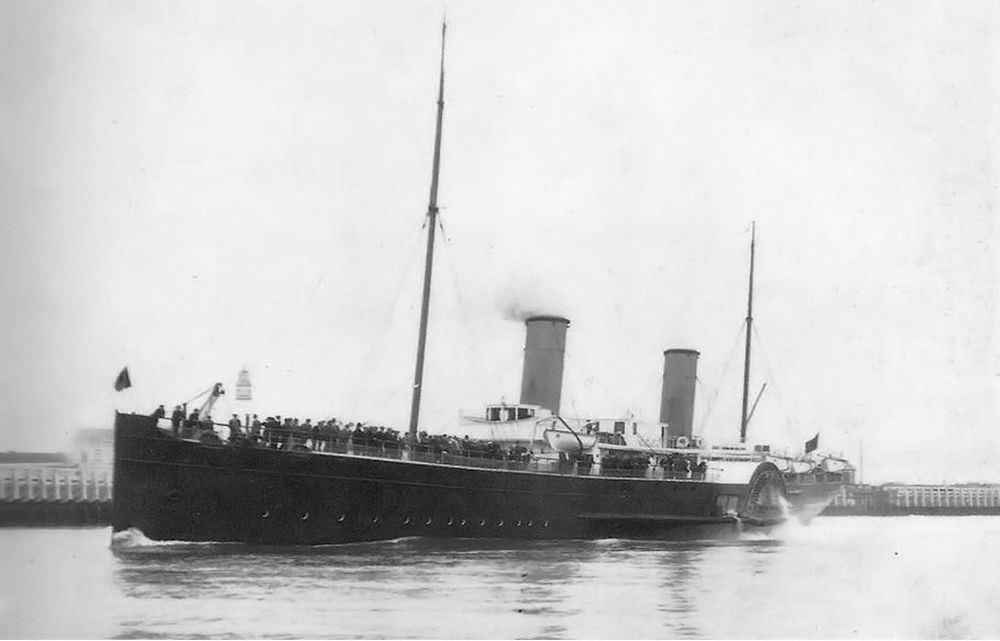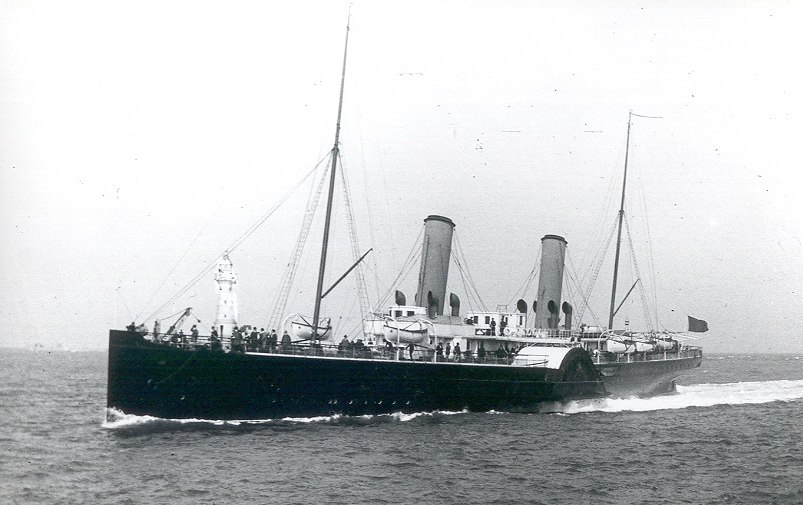paddlesteamers.info : The Internet's leading database of
Paddle Steamers past and present
UK to Belgium : Short Sea Ferry Services
Regie voor Maritiem Transport (RTM)
The
company operated paddle steamers between Oostende and Dover from 1846
with Chemin de Fer inaugurating the service. Their English
counterparts, the London , Chatham & Dover Railway withdrew from
the route in 1862 requiring the RTM to hastily arrange provisional
vessels to fulfill the Belgian Mail contract. Their first turbine
steamer entered service in 1905 and their first diesel-powered ferry in
1934. As the transport of cars became increasingly important, a turbine
steamer was converted to roll-on roll-off operation in 1936. The first
purpose-built car ferry was introduced in 1949. The state-owned
company continued until 1997, latterly in partnership with Sealink and
later other UK based lines, as the route became increasingly unviable
after the opening of the Channel Tunnel in 1994

Princesse
Clementine (1897-1928) was the last RTM cross-channel paddle steamer,
both to be built and disposed of. She arrived for scrapping in
Dunkerque in August 1928 as the last operational cross-channel steamer,
although she had only been on the reserve roster for some time as she
was, by then, well outclassed. The company already had six turbine
steamers and four more were to be ordered for delivery in 1930. Photo in the public domain
Princesse Clementine
Built by Cockerill at Hoboken (Antwerp) in 1897
Length : 324.3 ft : Breadth : 37.8 ft : 1474 GRT
Based in the UK as a troop ship and occasional hospital ship during World War I
In service until 1923 and later held in reserved before being scrapped at Dunkerque in 1928
Chemin de Fer, later Diamant (1846-1847)
Ville d'Ostende later Rubis (1847-
Ville de Bruges later Topaze (1847-
Emeraude (1848-1914)
Belgique (1862-1879) Built as a survey vessel for the River Schelde and later returned to these duties
The Scud - on charter in 1863
Princesse Clementine - on charter in 1863
Perle (ex- John Penn, 1864)
Sapphir (ex- Queen of the French, 1864)
Louse Marie (1867-1894)
Leopold I (1868-1919)
Marie Henriette (1870-1893)
Comte de Flandre (1870-1893)
Comtesse de Flandre (1871-1889, sunk in collision with Princesse Henriette)
Prince Baudouin (1872-1896)
Parlement Belge (1873-1895)
Prince Albert (1887-1910, sold)
Ville de Douvres (1887-1910, sold)
Le Flandre (1888-1918, sunk as a blockship in Ostend)
Manx Queen - on charter in 1888
Freia - on charter in 1888
Princesse Henriette (1888-1921)
Princesse Josephine (1888-1918)
Leopold II (1893-1920, broken up in Germany in 1922)
Marie Henriette (1893-1914, wrecked at Cap Barfleur)
Rapide (1895-1923)
Princesse Clementine (1897-1928)
The final three paddle steamers built in Scotland for the RTM
Princesse Henriette and Princesse Josephine
Built by Wm. Denny & Bros of Dumbarton, UK in 1888.
Length : 300 ft : Breadth : 38 ft : 1101 GRT
Compound Diagonal Engines : 58 and 104 in x 72 in
Princesse Henriette survived in service until 1921
Princesse
Josephine was commandeered by the German Army in 1918 and used as an
accommodation ship. Scuttled in October 1918 at Bruges and
subsequently broken up
Leopold II
Built by Wm Denny & Bros of Dumbarton, UK in 1893
Length : 340 ft : Breadth : 38 ft : 1367 GRT
Compound Diagonal Engines : 59 and 104 in x 81 in
Sold to London owners in 1922 then re-sold for scrapping in Germany the same year

Above : Leopold II, the last Clyde-built paddle steamer for the Belgian cross-channel operators RTM. Photo in the public domain
References
The 151 Story http://users.telenet.be/eddy.lannoo/index.html
Return to
Historical Database


